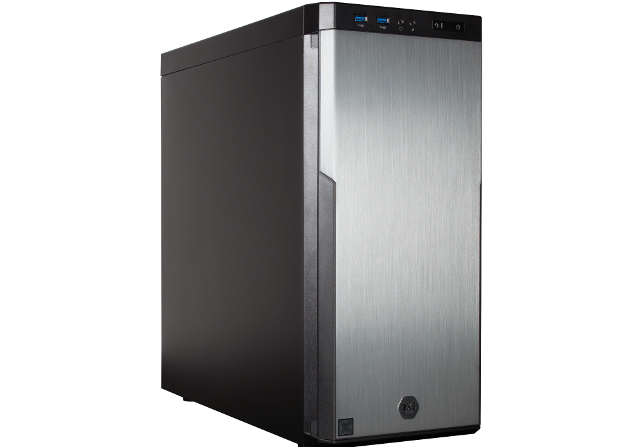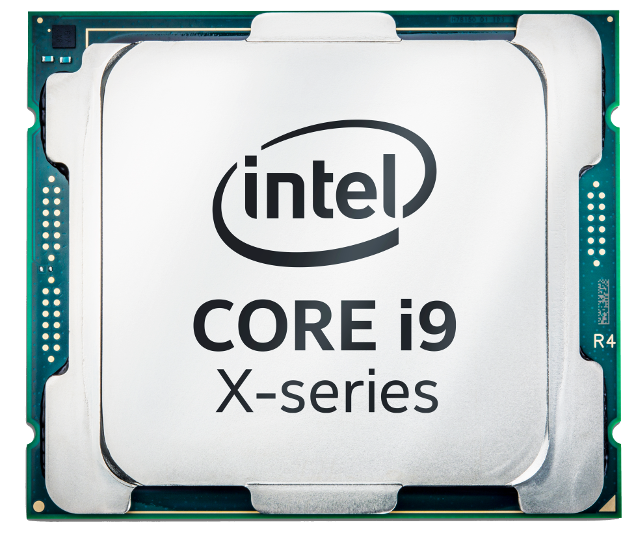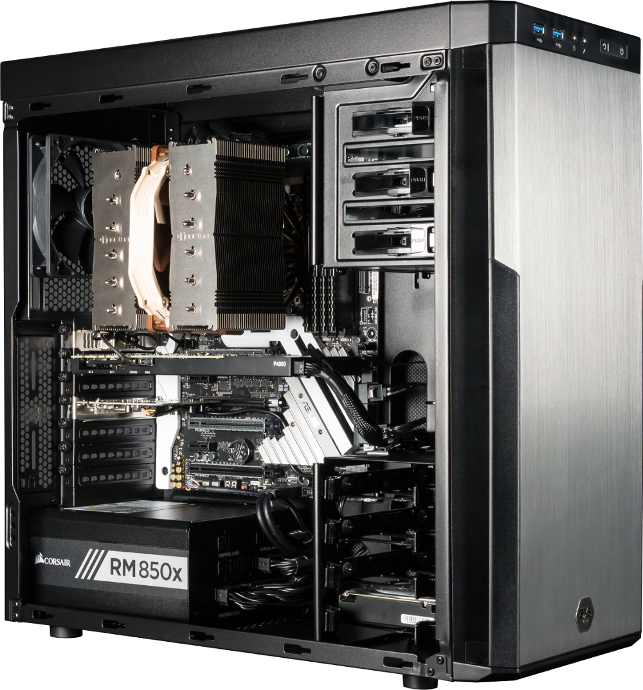Scan 3XS WI6000 Viz – Intel Xeon used to be the only CPU brand for those serious about ray trace rendering. But with the new 18-core Intel Core i9-7980XE and some overclocking wizardry, Bolton-based Scan is rewriting the rulebook with a phenomenally fast workstation for both CAD and design viz
Buying a workstation for design viz has always been a bit of a balancing act. You ideally want a processor with lots of cores to crunch through ray trace renders, but CPUs with a high core count typically have a much lower clock speed. And if clock speed falls too low, then general system and application performance suffer.

Case Corsair Carbide 330R Titanium chassis
The sweet spot has traditionally come in the form of a special ‘workstation-class’ Intel Xeon E5-2600 series CPU – a model denoted by a ‘W’ suffix. The Xeon E5-2687W V4, for example, features 12 cores that run at 3.00 GHz, while one core can Turbo up to 3.50 GHz to accelerate single-threaded applications like CAD. In the new Intel Xeon Scalable family, the processor of choice appears to be the Intel Xeon Gold 6154 (18 cores at 3.0 GHz with a 3.70 GHz Turbo), as specified by Armari in its Magnetar R80.
With up to two CPUs per workstation and an extremely strong bond with the Tier One manufacturers (HP, Dell and so on), Intel Xeon will likely remain the high-end design viz processor of choice for years to come. However, it is now starting to see some extremely strong competition from so-called consumer CPUs, and specialist workstation system builders like Bolton-based Scan are poised to take advantage.
Over the summer, we have seen the number of cores on consumer CPUs rise dramatically. The AMD Ryzen Threadripper, for example, boasts up to 16 cores per CPU, while the new Intel Core X-Series processor family goes up to 18. Most importantly, clock speeds remain high as one of the key target markets for these new CPUs are gamers, who also want to stream or edit videos.
In addition, as the CPUs are ‘unlocked’, they can be overclocked, unlike all Intel Xeons which can only really run at standard clock speeds.
Scan 3XS WI6000 Viz – product specifications
■ Intel Core i9 7980XE CPU overclocked to 4.2GHz (18 cores, 36 threads)
■ 64GB (8 x 8GB) Corsair Vengeance LPX DDR4 3000MHz memory
■ 500GB Samsung 960 Evo NVMe M.2 PCIe SSD + 2TB Seagate Barracuda 7200.14
■ Nvidia Quadro P4000 GPU (8GB)
■ Asus Prime X299 Deluxe motherboard
■ 495mm x 210mm x 484mm (h) x (w) x (d)
■ Microsoft Windows 10 Pro 64-Bit
■ 3 Years – 1st Year Onsite, 2nd and 3rd Year RTB (Parts and Labour)
CPU benchmarks (single threaded) – Seconds (smaller is better)
SolidWorks 2015 IGES export: 94
CPU benchmarks (multi-threaded) – Seconds (smaller is better)
Luxion KeyShot 6.1 render test: 141
V-Ray CPU rendering benchmark (CPU): N/A
GPU compute benchmark – Seconds (smaller is better)
V-Ray render benchmark (GPU): N/A
3D graphics benchmarks (3D CAD) – Score (bigger is better)
SPECapc for SolidWorks 2015 (shaded + edges): 7.15
SPECapc for SolidWorks 2015 (RealView + shadows): 12.43
SPECapc for SolidWorks (RealView + shadows + AO): 34.05
SPECapc for PTC Creo 3.0 (shaded + edges): 11.18
SPECapc for PTC Creo 3.0 (reflection): 16.83
3D graphics benchmarks (design viz) – Frames Per Second (FPS) (bigger is better)
LumenRT (hotel model) (FPS): 49
LumenRT (roundabout model): 21
Autodesk LIVE (Villa Enhanced model): 146
Autodesk VRED Professional (AA off): 57
Autodesk VRED Professional (AA medium): 32
Autodesk VRED Professional (AA ultra high ): 14
3D graphics benchmarks (VR) – Frames Per Second (FPS) (bigger is better)
VR Mark (Orange): 187.87
VR Mark (Blue): 33.21
VR Mark (Cyan): N/A (benchmark not available at time of testing)










